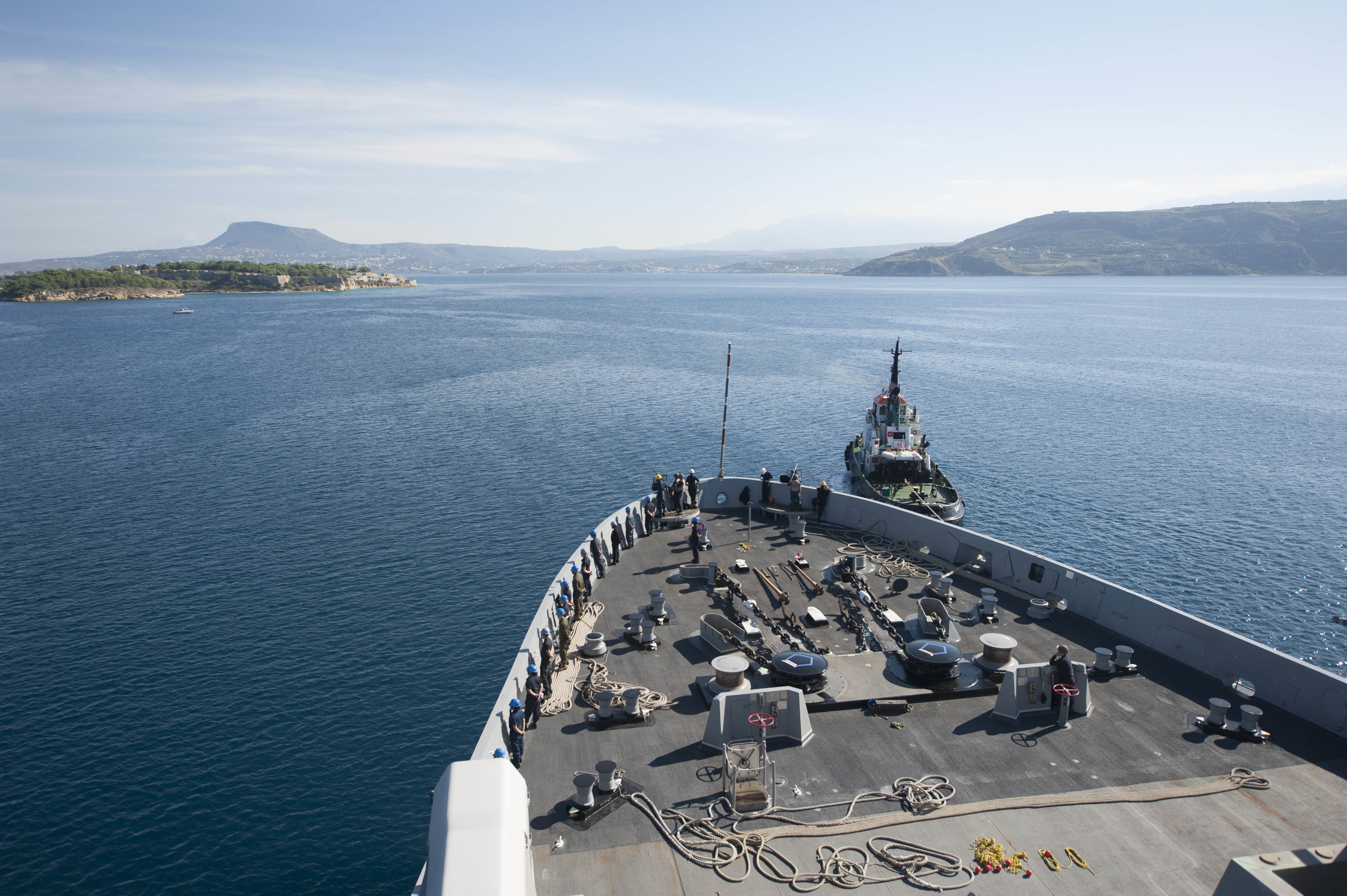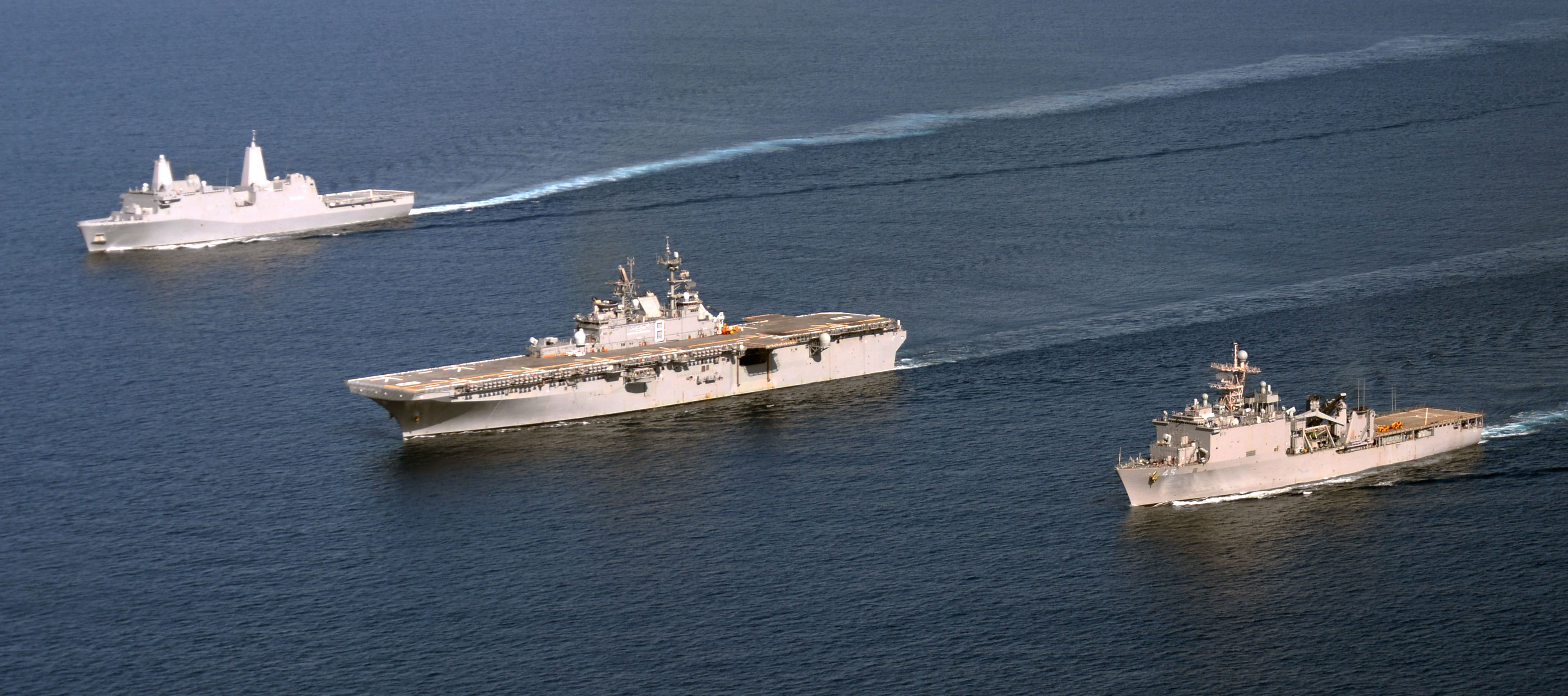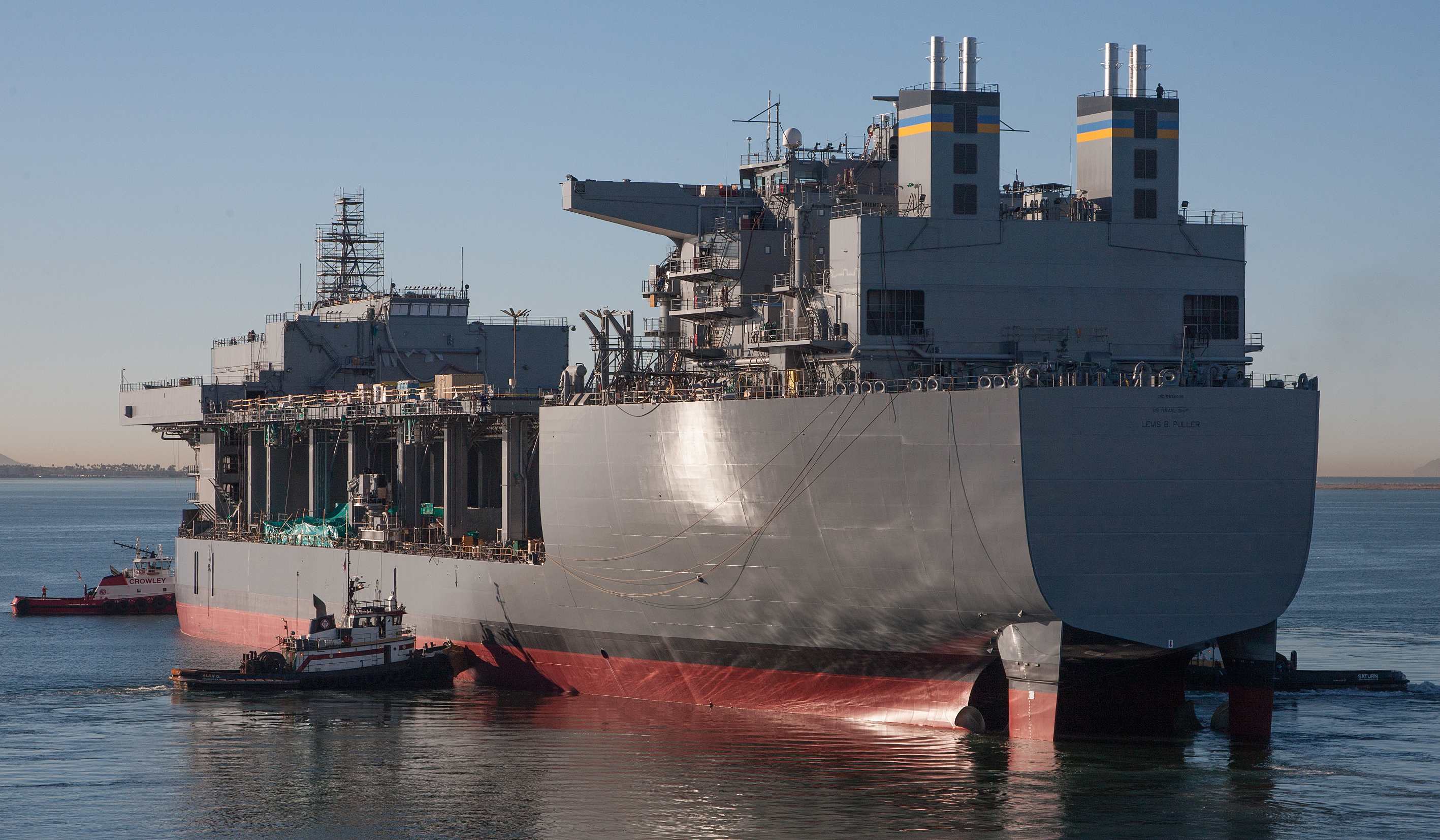
ARLINGTON, Va — Increasing challenges in Europe and Northern Africa have sparked a discussion in the Marine Corps and Joint Staff about revamping how to deploy amphibious groups, including the idea of splitting up the three-ship Amphibious Ready Group from the start.
Today, the ARG is given to U.S. Central Command, and the ships and Marine Expeditionary Unit deploy as a whole ARG/MEU – though in recent years, the ships almost always split up in theater to cover multiple parts of the Middle East. Sometimes, the amphibious transport dock (LPD) goes into U.S. European Command for a particular mission in the Mediterranean, but that decision only occurs mid-deployment and the LPD then returns to CENTCOM after finishing its mission.
With the threats in Europe and Africa growing both more numerous and more complex, though, Deputy Commandant for Combat Development and Integration Lt. Gen. Robert Walsh said the Marines and Joint Staff are kicking around the idea of nixing the three-ship deployment in favor of sending an LPD to the Mediterranean from the start.
“There’s been some discussion on the joint level – just discussion, no formal taking it to any kind of OpsDeps (Operations Deputies) tank or anything like that. But also within the Marine Corps, as we’re looking at this,” he told USNI News after a House Armed Services seapower and projection forces subcommittee hearing Feb. 25.
“We’ve developed a conops, concept of operations, for disaggregated ARM/MEU operations. So now what that means is, you’ve got a conops, you’ve got doctrine to train to, we organize train and equip (for disaggregated operations) in their workup cycles – before we weren’t doing that, they were all supposed to be together. Now we’re training for that so we can get out there and do it.”
The next step, now that the Marines are training and preparing for disaggregated operations, is to officially change how the Global Force Management process assigns amphibious forces.
“What if you could split off a ship in advance? A ship, instead of all three going to CENTCOM and getting over there and trying to say ‘hey, can you split one off for EUCOM,’ why not in advance make those decisions? That’s what’s going to potentially happen anyway, why not just schedule it and say we’re going to send one into the Med” Walsh said.
“Right now it’s conversations within the joint world, but also within senior leadership in the Marine Corps we’re looking at that and going, we always fought ever disaggregating but now we’re doing it and we’re doing it pretty well and effectively and being in more places than one. Now should we do this from the planning start?”

Walsh noted that two more LPDs are set to join the fleet within the next year or so – John P. Murtha (LPD-26) and Portland (LPD-27), which will increase the options available for covering the Mediterranean.
“If you had a single ship that could go over there outside the ARG/MEU, and you had the three ships that went to CENTCOM as an ARG, they’d stay there,” he said.
“If you had an extra one, you could put the (Europe-based) Special Purpose MAGTF (Marine Air-Ground Task Force) on it, and that was the original request was to get an LPD-17 and put the Special Purpose MAGTF on it. We didn’t have enough ships. So my point would be, take one of the ships out of CENTCOM and put it there, that’s an option. Or have another ship that just comes over and meets up with the SPMAGTF,” whether that ship is an independent deployer LPD or an auxiliary ship such as the Expeditionary Mobile Base (formerly Afloat Forward Staging Base).
Navy officials have increasingly talked about the need for more presence in EUCOM and AFRICOM, as terrorism, piracy and other threats continue to pop up around Africa and the Mediterranean. Vice Adm. Joseph Mulloy, deputy chief of naval operations for integration of capabilities and resources, said at the HASC hearing last week that the Global Force Management system has primary provided presence in the Mediterranean in the form of ships sailing through on their way to and from CENTCOM, but “the forces we have go where they need to be. We have clearly used our amphibs to operate as necessary off Libya on a number of occasions, and other ships, whether it’s on a national mission like grabbing the terrorists in Libya or other events that happened over there.”
This week Chief of Naval Operations Adm. John Richardson told the House Appropriations defense subcommittee that the carrier strike groups would begin to spend more time in the Mediterranean but that Navy can still only meet about half the combatant commander’s demand for aircraft carriers due to increased threats from Russia and the Islamic State.
Last week, Commandant of the Marine Corps Gen. Robert Neller and Navy Secretary Ray Mabus advocated for putting the new expeditionary mobile base USNS Lewis B. “Chesty” Puller (T-ESB-3), which is destined for the Middle East when the ship makes its maiden deployment late this year or early next year, in the Mediterranean instead to help move the Special Purpose MAGTF around Europe and Africa.

“I would like very much for that ship to be based in the Med. Right now that’s not the plan, but we’re going to continue to work on that,” he said.
“The COCOMs, both AFRICOM and EUCOM, have written a letter saying hey we’d like to have this capability in the Med to service West Africa and the Med because there’s stuff going on there that we need to be able to move around. You don’t want to be tied to a land base.”
Mabus agreed, saying “the Lewis B. Puller, that’s an expeditionary seabase, it’s an incredible capability. It carries a lot of stuff and it’s got a flight deck. We need one in the Med, we need one for Africa and for Europe. We’re building two more because we need ones in other parts of the world too.”





